Vol. 11, No. 4 / Number, Wages, Salaries And Earnings, And Socioeconomic Characteristics Of Fishers And Owners
Abstract
In this issue, Dr. Posadas shows the long-term trends in the number, wages, salaries, and earnings of fishers and owners of commercial fishing businesses in the U.S. and Gulf of Mexico states since 2001. He compared the socioeconomic characteristics of the fishers and owners in 2016 and 2020.
Most Valued Commercial Species
Commercial fishing comprises establishments primarily engaged in the commercial catching or taking of finfish, shellfish, or miscellaneous marine products from a natural habitat. (U.S. Bureau of Census, https://www.census.gov/eos/www/naics/index.html). The most valued species commercially landed in the Gulf of Mexico States are white shrimp, brown shrimp, menhaden, oysters, blue crabs, stone crabs, red snapper, spiny lobster, red grouper, pink shrimp, crawfish, red grouper (Figure 1).
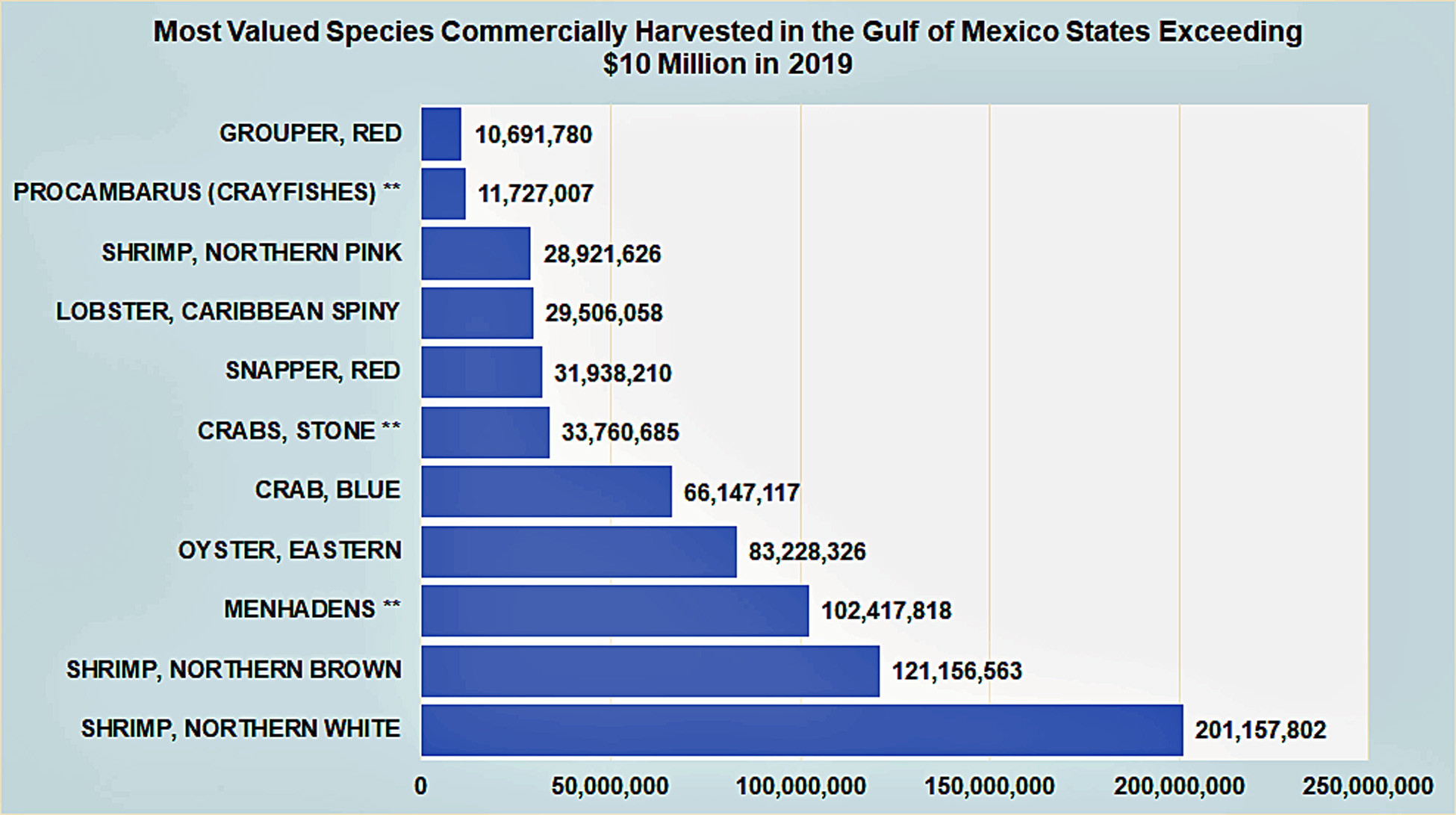
Commercial Fishing Employment And Wages, Salaries, And Earnings
According to the U.S. Bureau of Labor Statistics, Occupational Outlook Handbook, fishers and related fishing workers typically do the following tasks:
- Locate fish with the use of fish-finding equipment
- Direct fishing operations and supervise the crew of fishing vessels
- Steer vessels and operate navigational instruments
- Maintain engines, fishing gear, and other onboard equipment by making minor repairs
- Sort, pack and store the catch in holds with ice and other freezing methods
- Measure fish to ensure that they are of legal size
- Return undesirable or illegal catches to the water
- Guide nets, traps, and lines onto vessels by hand or with hoisting equipment
- Signal other workers to move, hoist, and position loads of the catch
The commercial fishing industry directly provided more than 83,000 jobs per year in the United States through the past decade (Figure 2). The five Gulf of Mexico states (AL, FL, LA, MS, and TX) contributed about 28 percent of all the fishing jobs during the period.
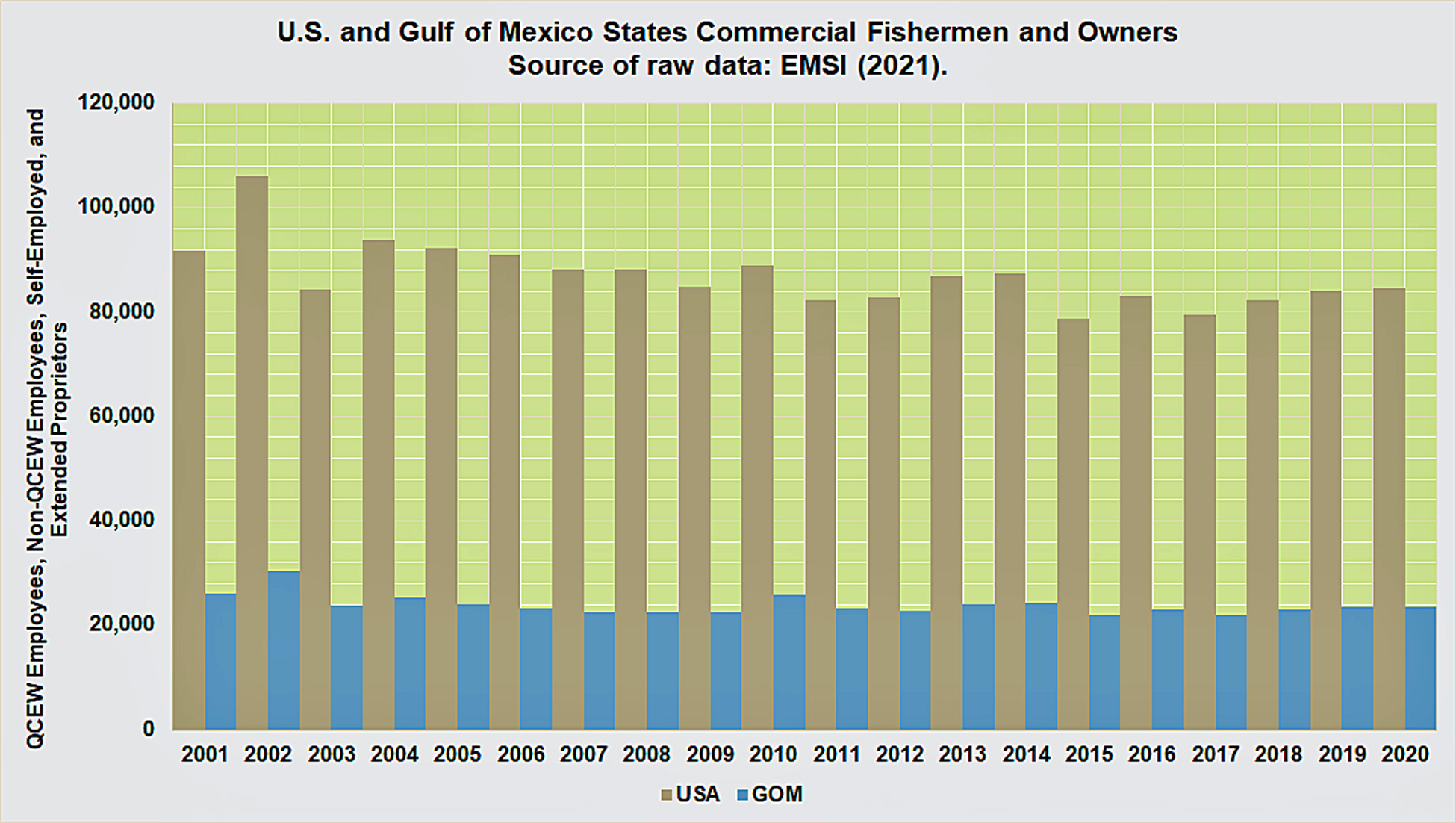
The combined wages, salaries, and proprietor earnings (at constant 2020 prices) of all the QCEW employees, non-QCEW employees, self-employed, and extended proprietors averaged more than $35,000 per person the past decade (Figure 3). The annual pay of fishers and owners of fishing businesses in the five Gulf of Mexico States averaged more than $25,000 per person or 73 percent of the national average.
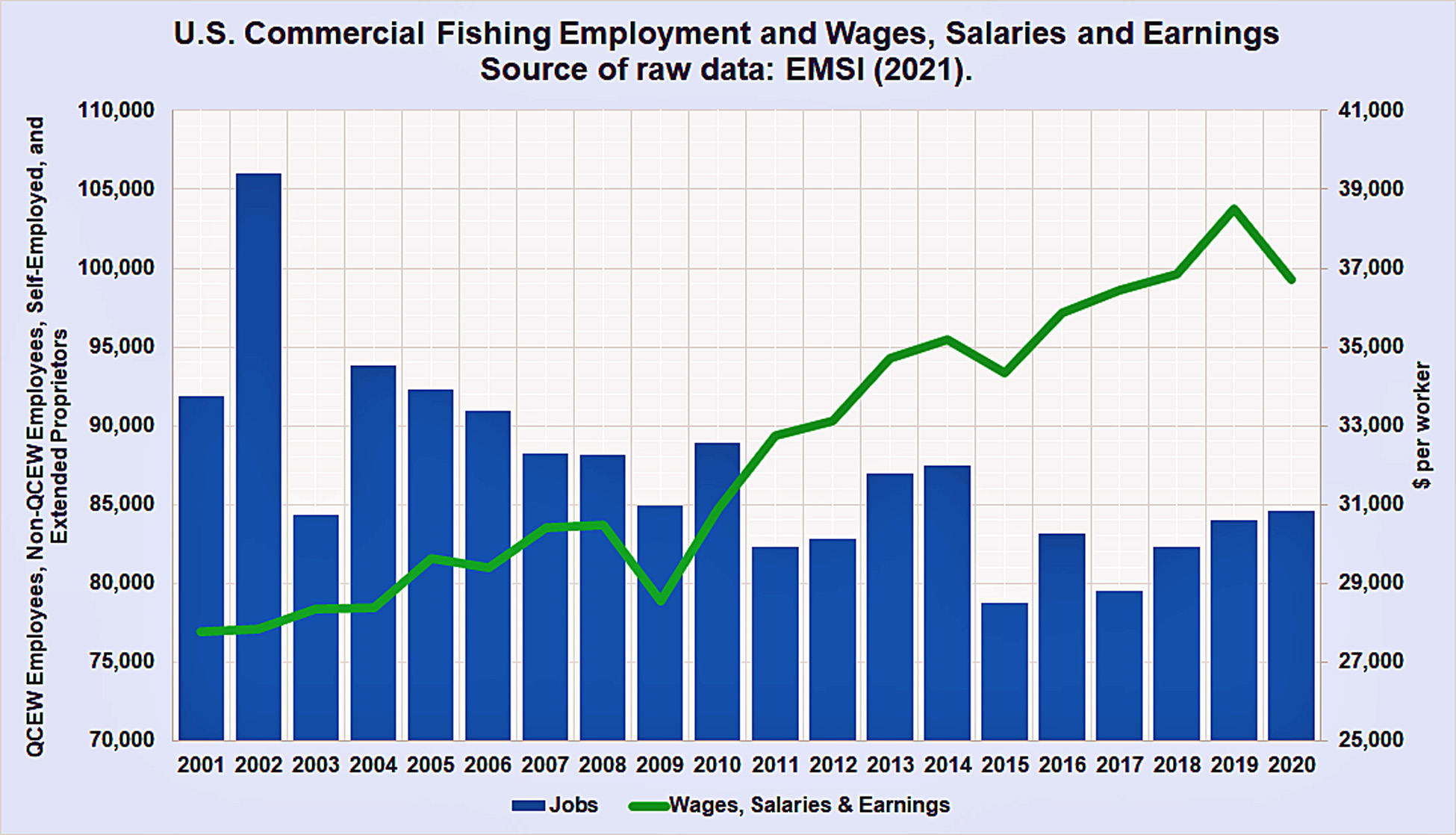
Distribution Of Commercial Fishermen By Gender
The 2020 industrial overview released by EMSI (April 2021) showed that approximately 90.8 percent were males (Table 1). About 9.2 percent of the fishing workers and boat owners were females. In the Gulf States, 90.6 percent are males, while 9.4 percent are females.
The proportion of male fishers and owners declined from 93.2 to 90.8 percent from 2016 to 2020 in the entire U.S. commercial fishing industry (Figure 4). This downward trend resulted to relatively more women fishers and owners entering the commercial fishing industry.

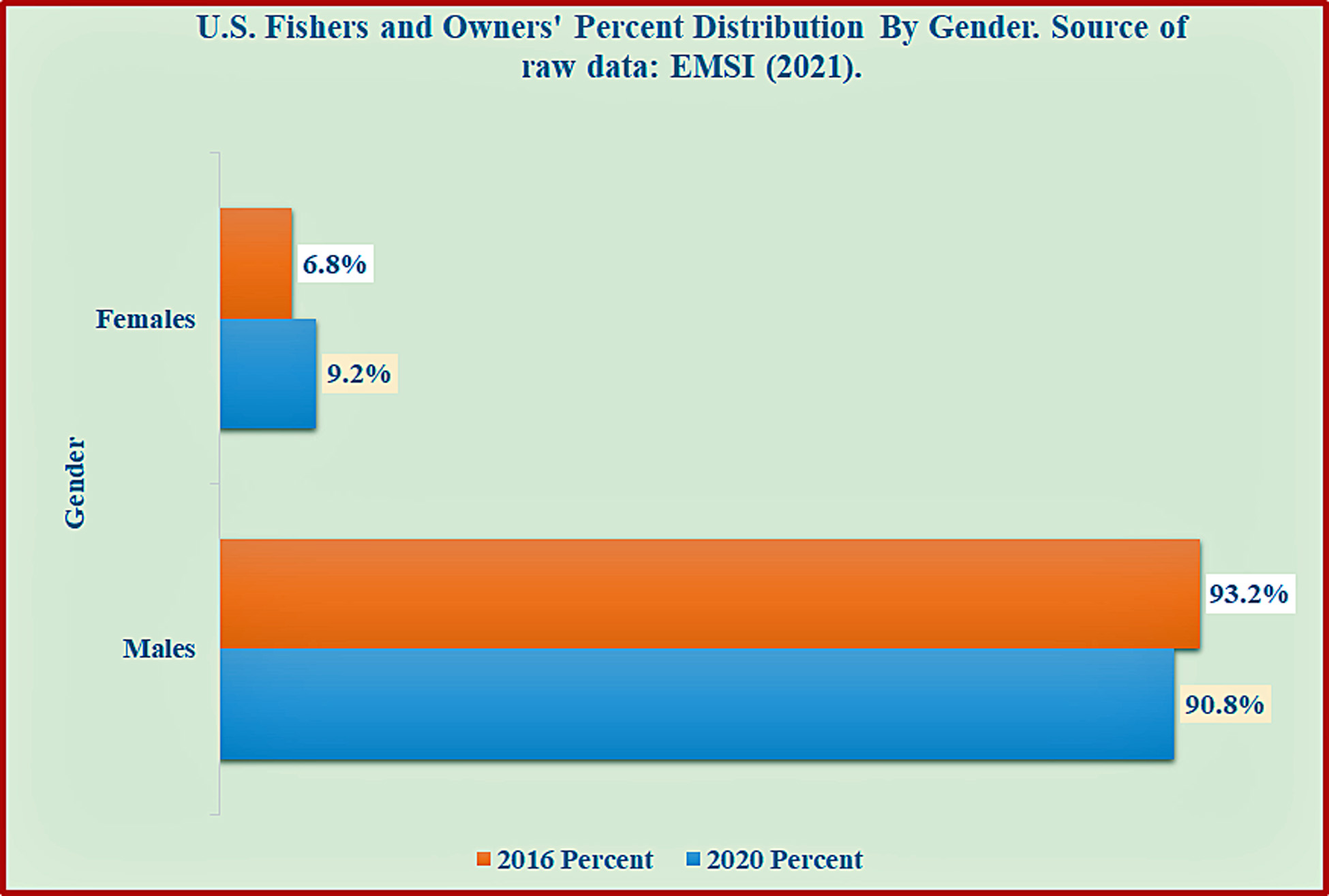
Distribution Of Commercial Fishermen By Race Or Ethnicity
The 2020 industrial overview disseminated by EMSI (April 2021) also categorized the fishers and owners by race or ethnicity (Table 2). The majority of the workers are Whites (81.3%), followed by Asians (5.8%), and Native Americans or Alaska Native (4.3%). The rest are Hispanic or Latino (3.5%), African Americans (1.4%), with two or more races (3.5%), and Native Hawaiians or Pacific Islanders (0.3%). In the Gulf States, relatively more Asians, Hispanics, and African Americans are engaged in commercial fishing.
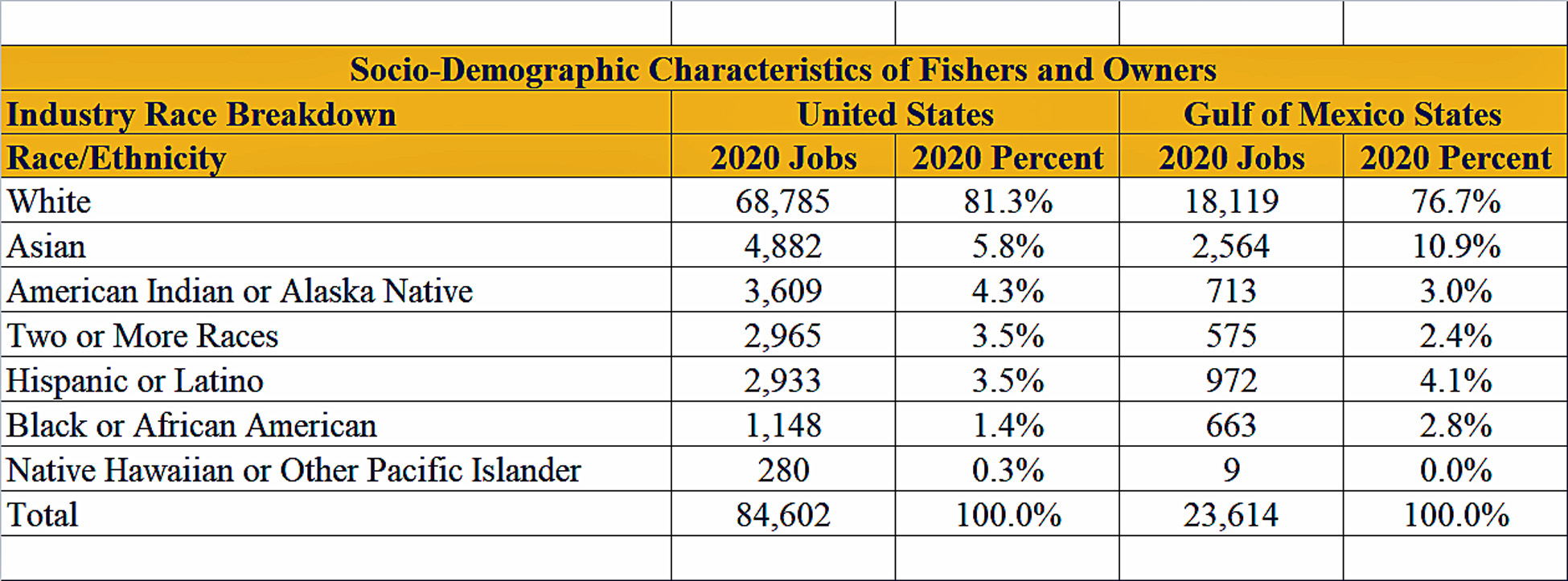
Some changes in the 2020 race distribution of fishers and owners contrasted to the 2016 race distribution (Figure 5). Relatively higher percentages of fishers and owners were observed among Whites, Hispanics, African Americans, and Native Hawaiians in 2020. Lower proportions were detected among American Indian and Asian fishers and owners last year.

Distribution Of Commercial Fishermen By Age
The 2020 industrial overview published by EMSI (April 2021) also classified the fishers and owners by age (Table 3). More than one out of 10 of the fishermen and owners are 65 years old and above. The 55-64 years old fishers and owners consisted of 30.8 percent of the total. The 45-54 years old group added 27.7 percent of the total. The 35-44 years old consisted of 12 percent of all fishermen and owners. The younger fishermen and owners comprised the rest of the fishermen and owners.
The commercial fishermen in the Gulf States are relatively older than the national average. Gulf fishers and owners averaged 50.8 years old compared to 49.7 years old among all U.S. fishers and owners.
Compared to the 2016 age profiles, commercial fishers and owners were about three years older in 2020 (Posadas, 2017). Higher percentages of 65 years old and above and 55-64 years old fishers and owners were reported in 2020 compared to 2016 (Figure 6). Lower proportions were observed for the younger groups in 2020 compared to 2016.
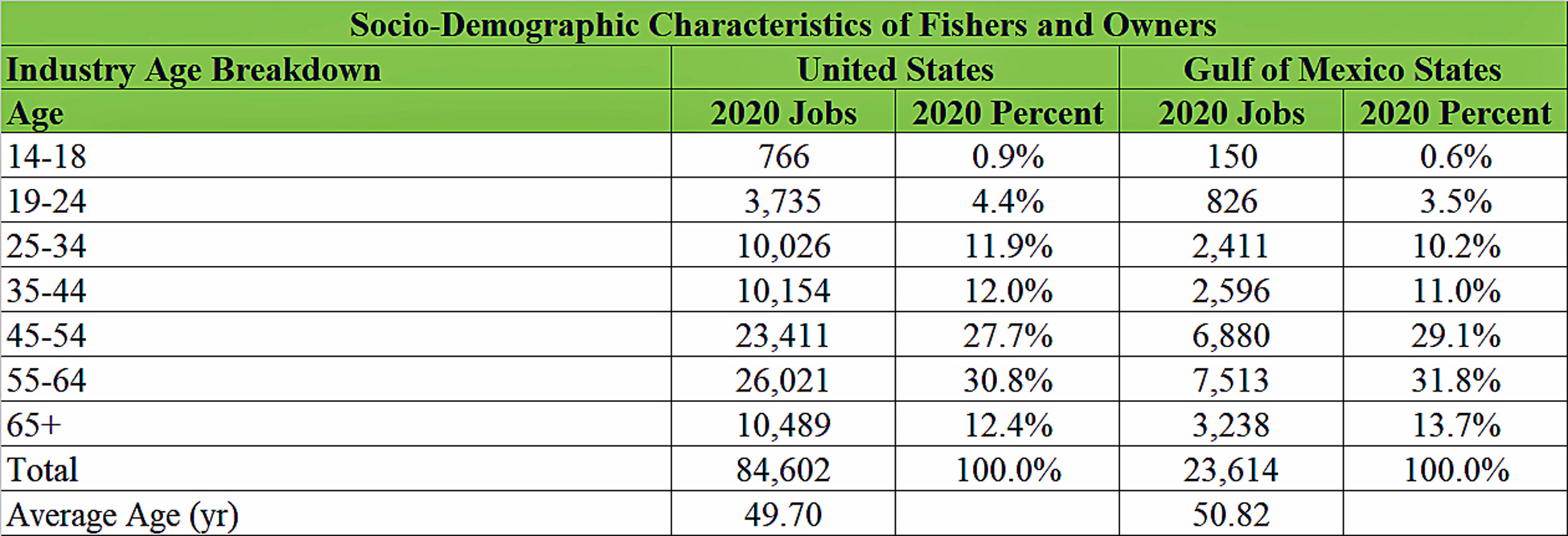
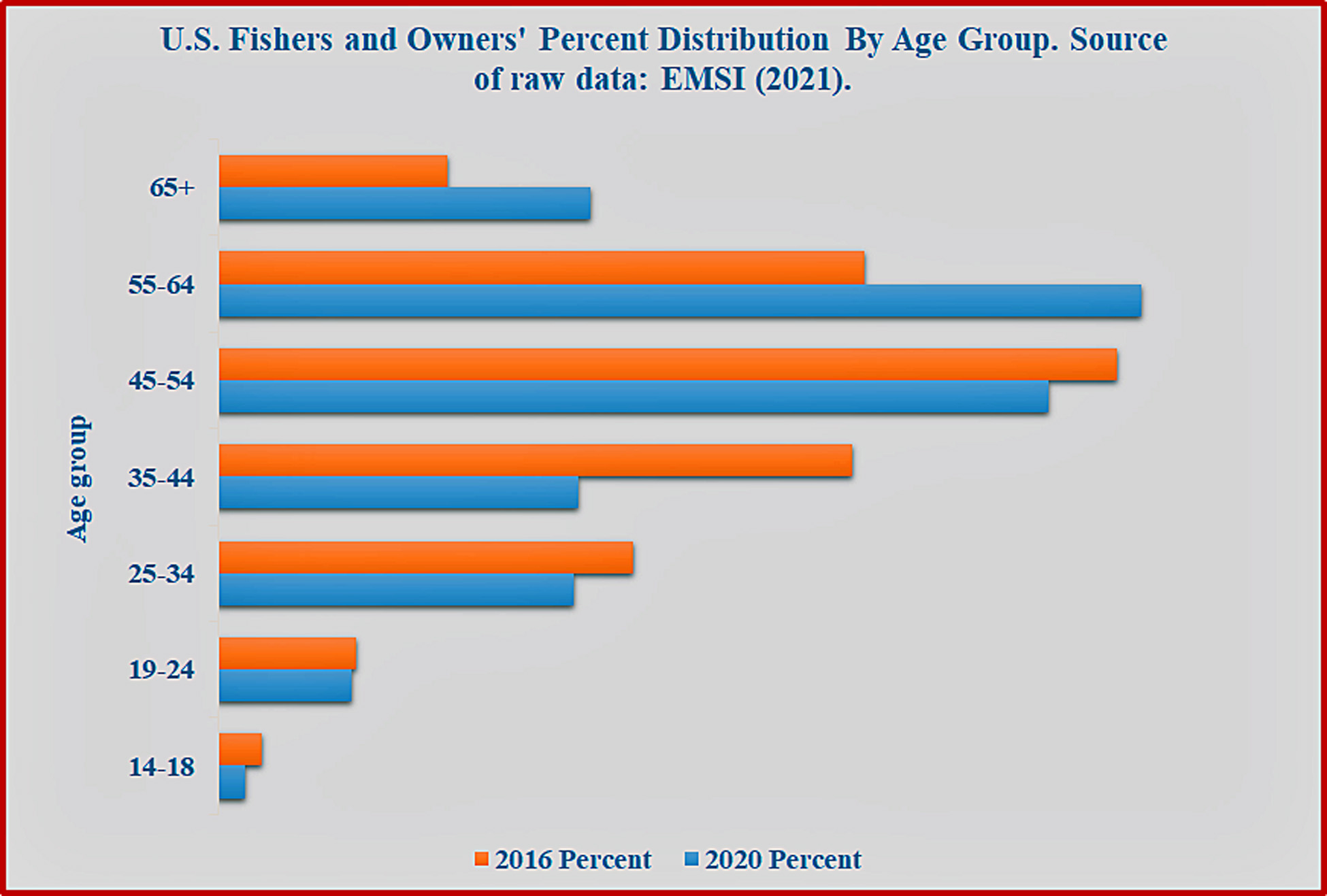
My Covid-19 Gulf Fisheries Economics Outreach
- Posadas, B.C. Number, Wages, Salaries and Earnings, and Socioeconomic Characteristics of Fishers and Owners. Mississippi MarketMaker Newsletter, Vol. 11, No. 4. April 6, 2021.
- Posadas, B. C. Horticulture, Marine, and Disaster Economics Outreach, “Number, Wages, Salaries and Earnings, and Socioeconomic Characteristics of Fishers and Owners,” Mississippi State University, Coastal Research and Extension Center, Virtual Presentation here. (April 6, 2021).
- Posadas, B. C. Horticulture, Marine, and Disaster Economics Outreach, "Direct Economic Impacts of the 2019 BCS Openings to the Northern Gulf of Mexico Commercial Fisheries," Mississippi State University, Coastal Research and Extension Center, Virtual Presentation here. (March 8, 2021).
- Posadas, B. C. Horticulture, Marine, and Disaster Economics Outreach, “November Commercial Landings and Direct Losses in the Northern Gulf of Mexico Shrimp Fisheries,” Mississippi State University, Coastal Research and Extension Center, Virtual Presentation here. (January 1, 2021).
- Posadas, B. C. Horticulture, Marine, and Disaster Economics Outreach, “Direct Economic Impacts of the 2019 BCS Openings to the Northern Gulf of Mexico Commercial Fisheries,” Mississippi State University, Coastal Research and Extension Center, Virtual Presentation here. (November 1, 2020).
- Posadas B. C. 2018. “Know more about the commercial fishermen in the Gulf of Mexico states.” Mississippi-Alabama Sea Grant Consortium. News.
- Posadas, B. C. 2017. Commercial Fishing Employment and Incomes in Mississippi, Gulf of Mexico, and United States. Mississippi MarketMaker Newsletter. Vol. 7, No. 19.
Suggested Citation
Posadas, B.C. Number, Wages, Salaries and Earnings, and Socioeconomic Characteristics of Fishers and Owners. Mississippi MarketMaker Newsletter, Vol. 11, No. 4. April 6, 2021.







